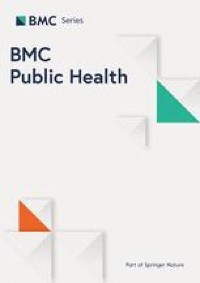
The present study was a quasi-experimental research conducted to investigate the effect of an educational intervention based on the theory of planned behavior on behaviors related to obesity and overweight in 90 first-grade female high school students (students from 7th class to 9th class) in Gachsaran city in 2019–2020. According to the sample size formula, considering a similar study [21] with a 95% confidence interval, statistical power of 90%, and a standard deviation of attitude score of 3.7, 40 participants were estimated for each group. Considering the possibility of attrition, 45 participants were included in the study. The students were selected using a multi-stage random sampling method. Firstly, four schools were randomly selected from a total of 24 girls’ high schools, and out of these four schools, two were randomly assigned as the intervention group and two as the control group. The sample consisted of 45 participants in the intervention group and 45 participants in the control group, randomly selected from each grade (first, second, and third) based on the inclusion criteria. Overweight students in each group were selected by lottery method. With the cooperation of school health care workers, a list of overweight and obese students was prepared, and an equal number of students from schools and grades were randomly selected to enter the study. All parents received written information about the questionnaire and procedure. Informed written consent will be obtained from all students and their parents. For parents who were illiterate, since risks associated with research were low, after explaining the objectives of the intervention in a language understandable to them, oral informed consent was obtained, this protocol was approved by the ethics committee of Rafsanjan University of Medical Sciences.
The inclusion criteria were being in the 85th percentile and above based on the growth chart of the World Health Organization, parental satisfaction, absence of physical disabilities, heart disease, respiratory disease, mental illness, and certain systemic diseases such as hypothyroidism and Cushing’s. The evaluation of these diseases was conducted by examining the students’ health records and obtaining information through questioning.
The exclusion criteria included student migration, new disease diagnosis, absence in more than two sessions, and non-cooperation in completing the questionnaire. The data collection tool is a questionnaire based on the constructs of the theory of planned behavior regarding two behaviors related to obesity: nutritional status and physical activity. The validity and reliability of this questionnaire have already been examined and confirmed [21].
The reliability of the questionnaire was confirmed by determining the internal consistency using Cronbach’s alpha coefficient (0.78) through a preliminary study involving 35 participants.
This questionnaire consists of seven parts. The first part includes demographic questions such as age, height, weight, body mass index, educational level, parents’ education level, parents’ occupation, and family income. Classification of social variables was done based on common education levels in the study population and income level was qualitatively classified.
The second part includes questions related to measuring knowledge, which consists of 10 questions. The minimum and maximum score for knowledge can range from 0 to 20.The next part focuses on the constructs of the theory of planned behavior, including 20 questions for attitude, 12 questions for subjective norms, 10 questions for perceived behavioral control, 7 questions for behavioral intention, and 10 questions for behavior. These questions were measured using a 5-point Likert scale.
To measure physical activity behavior, the short form of the International Physical Activity Questionnaire (IPAQ) was utilized. This questionnaire has been used in various studies, and its validity and reliability have been confirmed [22]. To assess the reliability of the International Physical Activity Questionnaire in this group, the test-retest method was employed. The questionnaire was distributed among 25 students, and after the initial test and a follow-up test two weeks later, the correlation coefficient was found to be 0.82, indicating good reliability of the questionnaire.
For the initial evaluation of educational needs based on the theory of planned behavior, the electronic pre-test questionnaire was completed and analyzed. Educational goals were established, encompassing five subjects: raising awareness, creating and improving a positive attitude towards obesity prevention behaviors, training managers, teachers, and parents of students, training focused on improving perceived behavioral control and behavioral intention for greater impact on behavior.
The educational intervention was designed and implemented in a virtual format, consisting of four sessions for students (each lasting 50–60 min) and one session for parents, managers, and teachers (also lasting 50–60 min). Various relevant educational methods were employed, including lectures, podcasts, group discussions, introduction of sports and nutrition-related blogs and websites, presentation of video clips and educational videos, sharing related photos, brainstorming, role-playing, distribution of educational pamphlets, SMS communication, and question-and-answer sessions (Table 1).
After 3 months, we conducted the post-test by distributing the same questionnaires to both the intervention and control groups, following the same procedure as the pre-test. Questionnaires were presented on the Porsline, an online survey platform in Iran. After explaining the objectives of the research and emphasizing the confidentiality of the information and obtaining informed consent from the parents, we posted the online survey link on Telegram and WhatsApp, two of Iran’s most widely used social media platforms and Questionnaires were completed virtually. In order to prevent bias, the schools included in the study were asked to avoid unintended interventions or co-interventions.
The data were analyzed using SPSS-22 software, employing independent and paired t-tests, chi-square tests, and Analysis of Covariance (ANCOVA). The normality of the data was assessed using the Kolmogorov-Smirnov test. Nonparametric statistics were used if the data did not follow a normal distribution.









